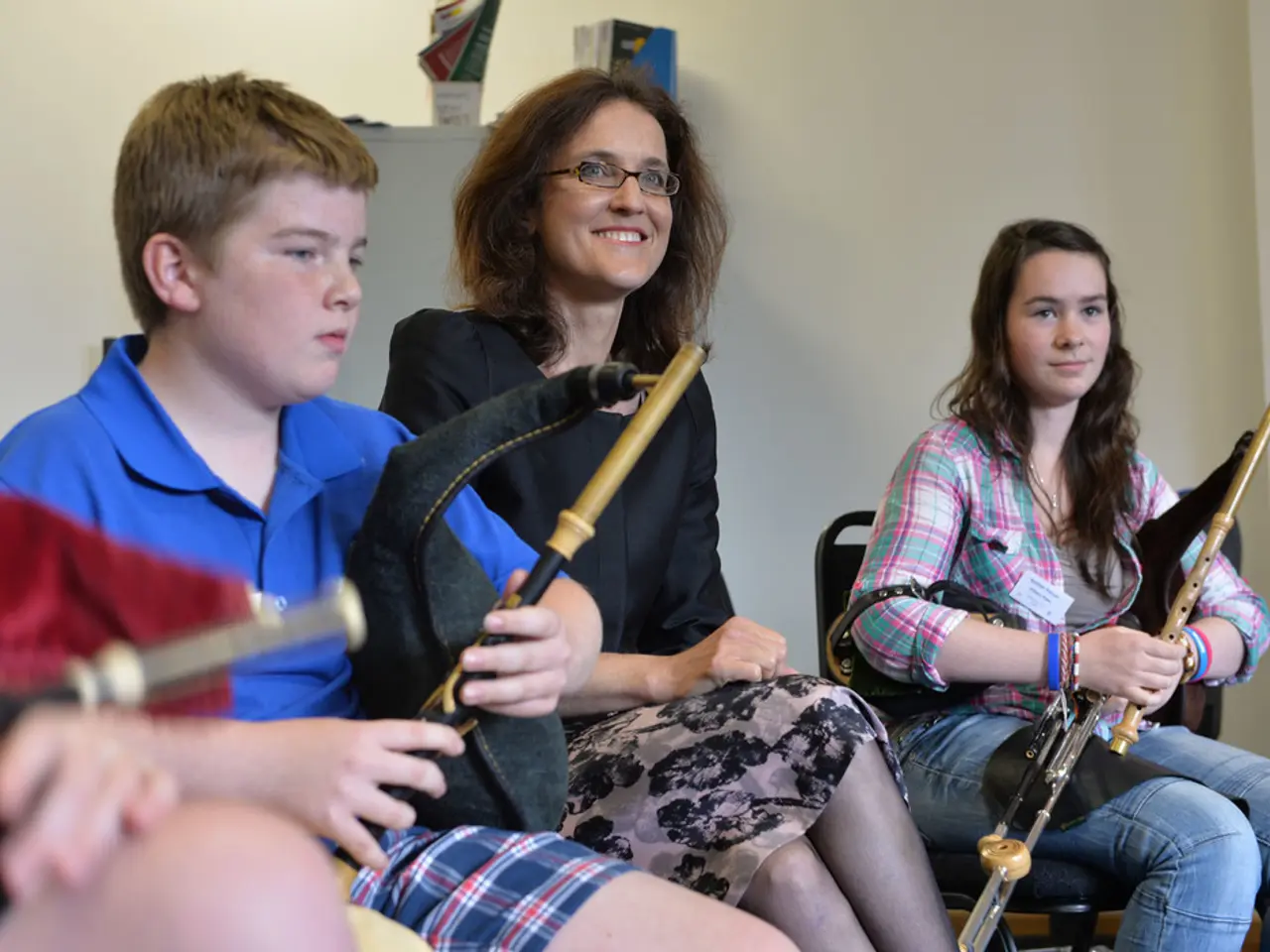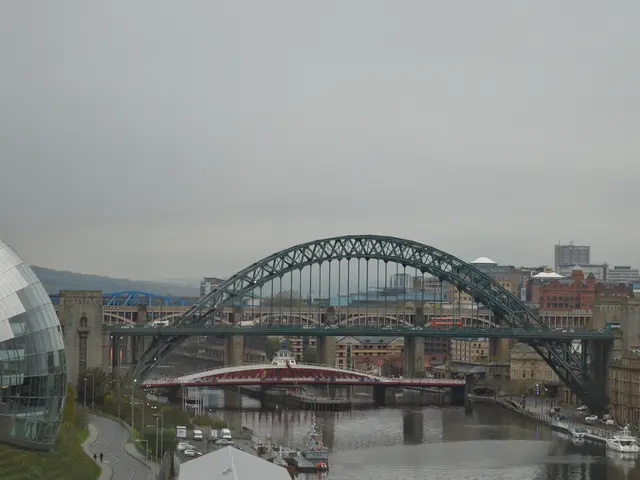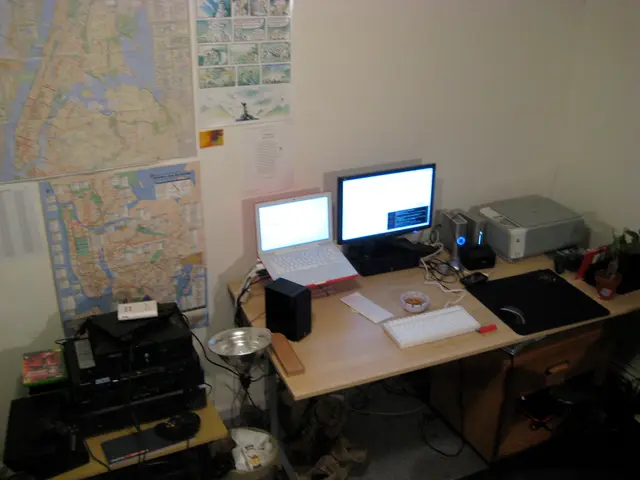Kid-Friendly Science Expedition: Creating Musical Notes with a Homemade Straw Flute
**Making a Straw Flute: A Fun and Educational Project for Elementary Students**
In a world where technology often takes centre stage, it's refreshing to find a project that combines fun and learning - introducing the straw flute! This simple yet captivating DIY instrument offers a unique opportunity for elementary school students to delve into the fascinating world of sound physics. Here's a step-by-step guide on creating a straw flute and exploring the science behind it.
**Creating the Straw Flute**
1. **Materials Required:** - A plastic drinking straw (straight and not bent) - A pair of scissors - A ruler or straightedge - A pencil or marker
2. **Cutting the Straw:** - Cut one end of the straw at an angle to create a small bevel (mouthpiece). - Cut the other end of the straw to create varying lengths for different notes.
3. **Creating the Finger Holes:** - Mark points along the straw where you want to create holes for different notes. - Use a needle or a small object to create small holes at these marked points.
4. **Playing the Flute:** - Hold the beveled end to your lips and blow across it as you would with a regular flute. - Cover and uncover the holes with your fingers to change notes and create different pitches.
**Understanding the Physics of Sound**
**Key Concepts:** 1. **Sound Waves:** - Sound is produced by vibrations that travel through a medium like air as pressure waves. - When you blow across the straw, you create vibrations that travel through the air inside the straw, producing sound.
2. **Pitch and Frequency:** - Pitch is how high or low a sound is. It is directly related to frequency, which is the number of vibrations per second. - Shorter lengths of the straw produce higher pitches because the air inside the straw vibrates more quickly.
3. **Resonance:** - The straw acts as a resonator, amplifying the sound waves produced by the vibrations. - The shape and size of the straw affect the resonance, contributing to the tone quality of the sound produced.
4. **Interference:** - When you cover and uncover the holes, you alter the path of the sound waves, creating interference patterns that change the pitch.
**Experiment Ideas:** - **Changing Pitch:** Experiment with different straw lengths and hole placements to see how these affect pitch. - **Resonance:** Observe how the tone changes when you alter the straw's length or shape. - **Sound Propagation:** Use different materials or environments to see how they affect sound propagation.
This experiment encourages students to explore practical applications of sound physics while having fun creating music with everyday materials. The principles learned through this project are also used in real wind instruments like pan flutes and pipe organs.
After completing the project, students can summarise their findings and present their decorated flutes for a show-and-tell presentation. Extension activities include experimenting with cutting straws at angles or flattening the ends, creating other homemade instruments, writing a simple song using the pitches, and joining the Library Club Membership for access to more art and STEM printables.
Supplies needed for the experiment include plastic drinking straws, scissors, a ruler, clear tape, and optional decorative materials. The straws should be cut in 1 cm increments from shortest (8 cm) to longest (16 cm). The experiment explores the physics of sound, focusing on vibrations, waves, and how instruments work.
Instructions for the experiment can be found in the Library Club's printable resources. This project is suitable for elementary school students in grades 1-5 and involves making a straw flute as a hands-on science experiment for kids. The straws should be taped together in the middle for stability, and the main concept being explored is the relationship between straw length and pitch.
To make the most of this learning experience, form a question, make a hypothesis, record data, and create a chart to track lengths and corresponding pitches. The experiment aligns with simplified NGSS standards, encouraging observation, wonder, and experimentation.
- This straw flute project, ideal for elementary school students, provides a fun and educational way to learn about the world of sound physics.
- By creating a straw flute, students can experience hands-on activities that teach them about sound waves and resonance.
- With the completed straw flute, children can play and create music, while simultaneously learning about pitch and frequency.
- The experiment also allows students to understand the concept of interference, as they cover and uncover the holes to change the pitch.
- To extend learning, students can experiment with different materials and environments to study sound propagation.
- This project not only fosters a love for learning but also prepares students for future STEM endeavors by introducing but one aspect of sound physics.
- After completing the project, students can decorate their flutes and present them during a show-and-tell presentation, encouraging creativity and public speaking.
- To facilitate further exploration, students can join the Library Club Membership for access to additional art and STEM printables.
- The experiment revolves around the use of plastic drinking straws, scissors, a ruler, clear tape, and optional decorative materials, with the goal of understanding the relationship between straw length and pitch.




